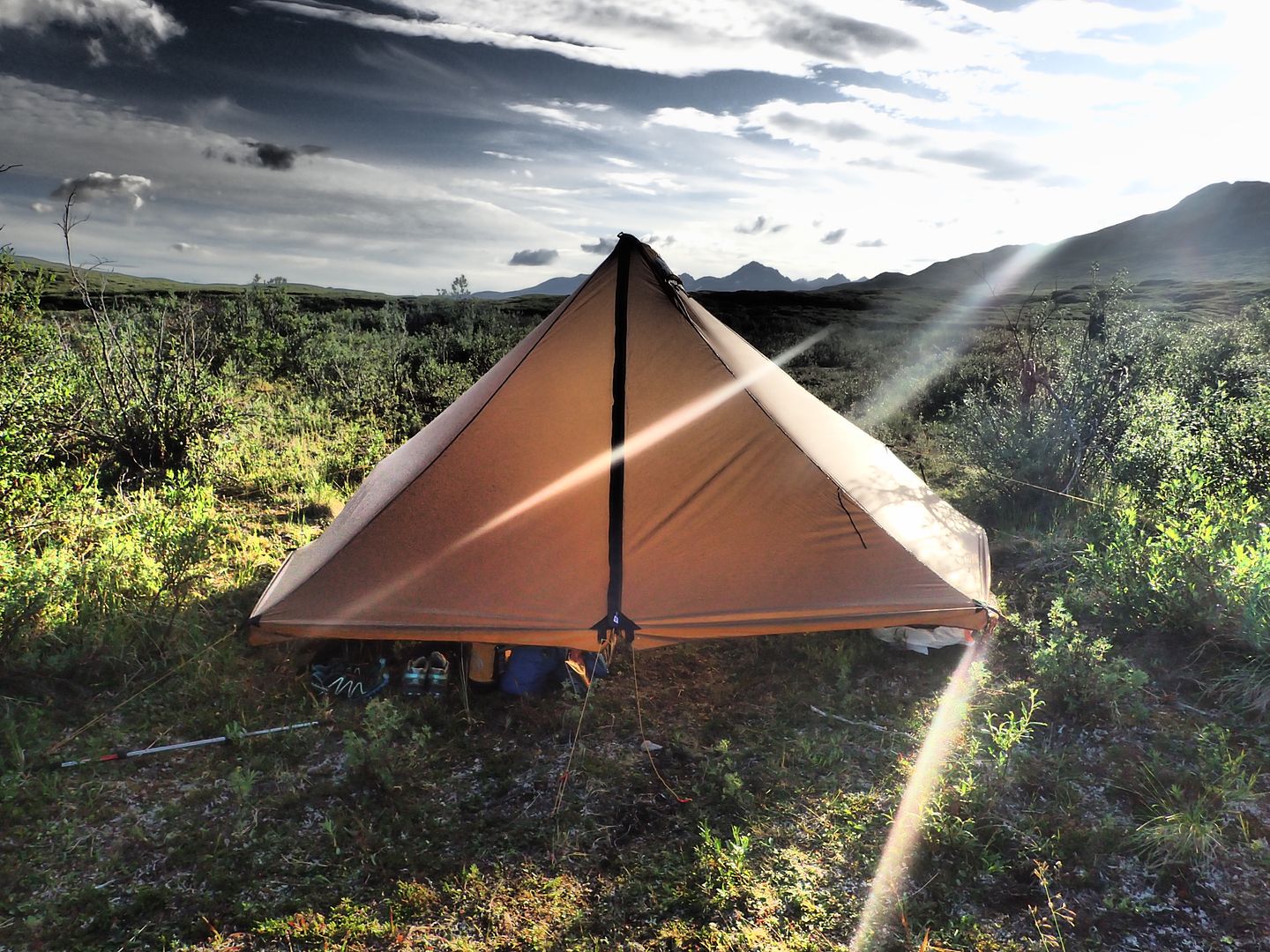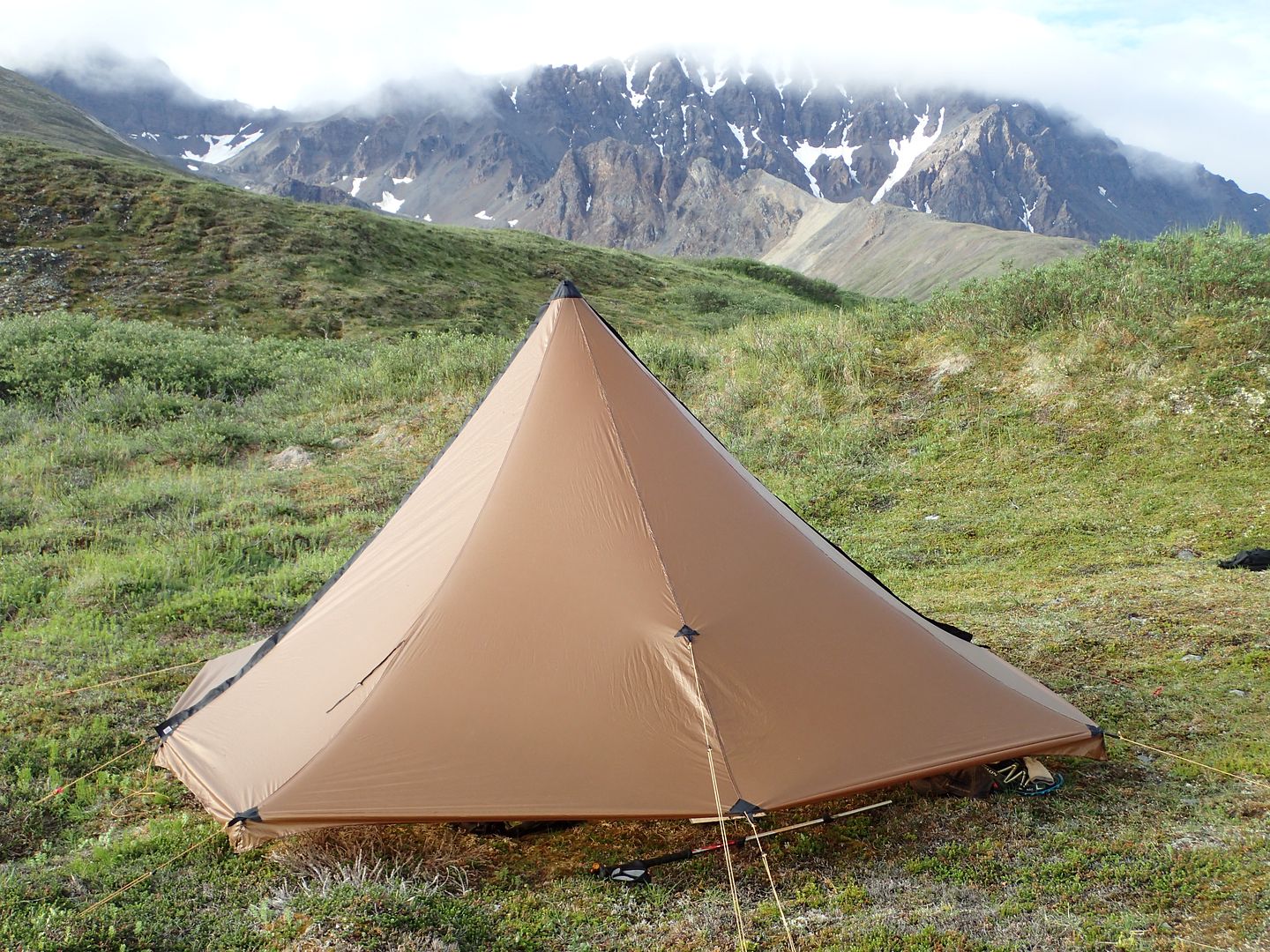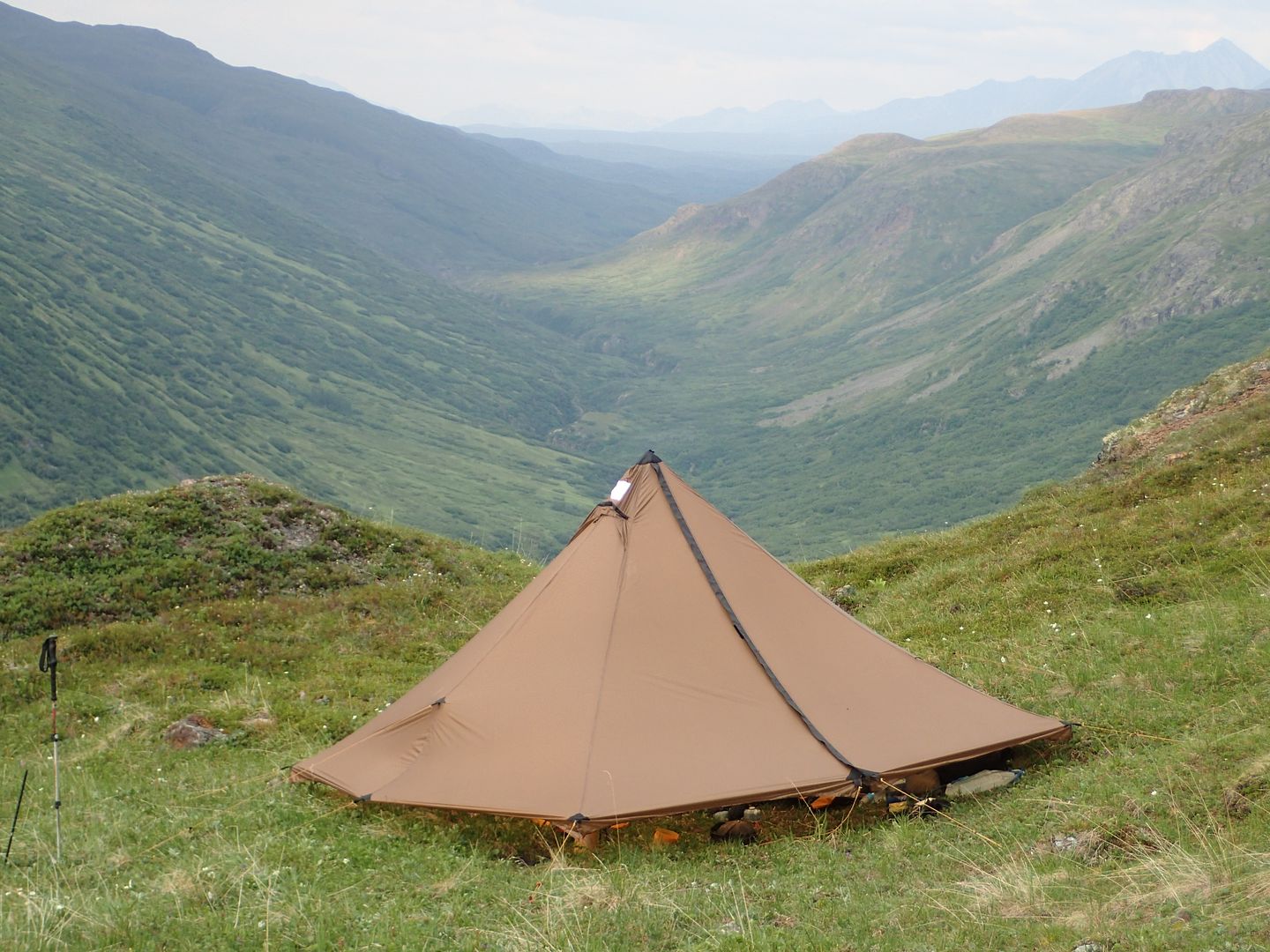Last night was the maiden voyage for my Seek Outside Cimarron. Set it up at 7,000 feet in a nice little meadow.

I kept the door open all afternoon and by the time I was ready to hit the hay, the inside of the shelter was already soaked. I spent 0 time in it during the day, moisture was presumably plant based.
I slept half the night with the zippers partly open, but was forced to close them when a nasty windstorm blew through. That same wind quickly turned the tent into my own personal car wash, whipping the condensation off the walls and all over my stuff.
Needless to say, by daybreak, I was soaked.
Looking for input on what could have been done better to alleviate or better yet, prevent this from happening.
My thoughts are these:
1) setting up over lush greenery in the summer is a bad idea, those plants are giving off moisture nonstop.
2) pitch the tarp higher with a bit of breathing room beneath.
3) add a bivy to the gear kit and keep my sleeping bag dry that way instead of just a ground cloth.
Thanks in advance!
Sent from my SM-N910P using Tapatalk

I kept the door open all afternoon and by the time I was ready to hit the hay, the inside of the shelter was already soaked. I spent 0 time in it during the day, moisture was presumably plant based.
I slept half the night with the zippers partly open, but was forced to close them when a nasty windstorm blew through. That same wind quickly turned the tent into my own personal car wash, whipping the condensation off the walls and all over my stuff.
Needless to say, by daybreak, I was soaked.
Looking for input on what could have been done better to alleviate or better yet, prevent this from happening.
My thoughts are these:
1) setting up over lush greenery in the summer is a bad idea, those plants are giving off moisture nonstop.
2) pitch the tarp higher with a bit of breathing room beneath.
3) add a bivy to the gear kit and keep my sleeping bag dry that way instead of just a ground cloth.
Thanks in advance!
Sent from my SM-N910P using Tapatalk






